#george seaman
Explore tagged Tumblr posts
Text

The Karno Company toured the West coast of the USA in 1911.
The Karno Company touring in Sacramento : Arthur Dandoe, Stanley Jefferson (Stan Laurel), George Seaman, Charles Chaplin, Fred Karno Jr., Albert Austin, Emily Seaman, Amy Reeves, Muriel Palmer, Mike Asher and Fred Palmer.
#charlie chaplin#the karno company#arthur dandoe#stan jefferson#george seaman#charles chaplin#fred karno jr.#albert austin#emily seaman#amy reeves#muriel palmer#mike asher#fred palmer#circa 1911
22 notes
·
View notes
Text
[Yoko] told me that it was my job to “keep John happy” by buying whatever he asked me to get and by generally keeping him company when he was lonely or bored. If he made any unusual requests or behaved strangely, I was to bring it to her attention. She also warned me that all kinds of people would try to contact John, and she made it very clear that I was never to put anybody through to him without her permission. She specifically cautioned me about taking calls from John’s teenage son, Julian, or the boy’s mother, Cynthia, as well as from Paul McCartney and the other ex-Beatles. (...) The next day, George Harrison called the Dakota and left a message for John. Winnie, the concierge, handed me a piece of paper on which she had written: “PLEASE CALL GEORGE – HE’S VERY ANXIOUS TO TALK TO YOU AFTER AN ABSENCE OF TEN YEARS!” When I gave John the message, he was less than thrilled. “Well, it’s kind of George to call after forgetting to mention me in his book,” he snickered. He gave me back the note and told me to “let Mother deal with it.” (...) Also around this time, there was a message from Paul McCartney wishing John luck [with the Double Fantasy sessions]. When I told Yoko that Paul had called, she looked alarmed. “You better not tell John,” she said, worrying that Paul would want to get in on the session.
John Lennon: Living on Borrowed Time, Frederic Seaman (1991)
148 notes
·
View notes
Text
The Beatles, Flowers, and Love
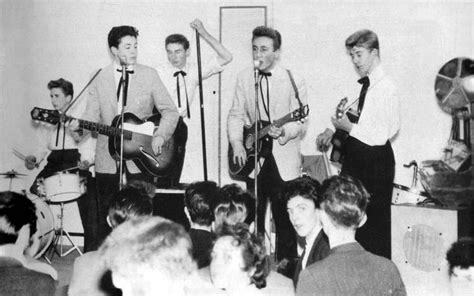
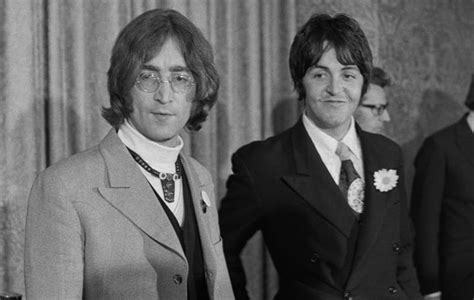
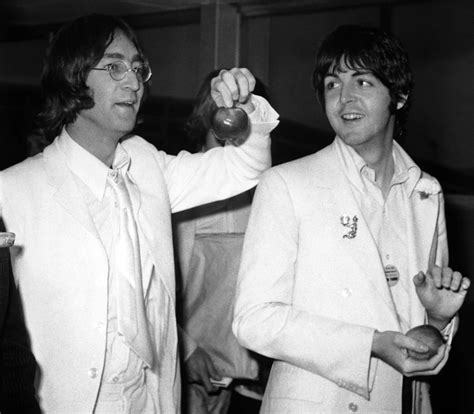
A white sport coat and a pink carnation I'm all dressed up for the dance A white sport coat and a pink carnation I'm all alone in romance
Once you told me long ago To the prom with me you'd go Now you've changed your mind it seems Someone else will hold my dreams
—A White Sports Coat (and A Pink Carnation)* (1957)


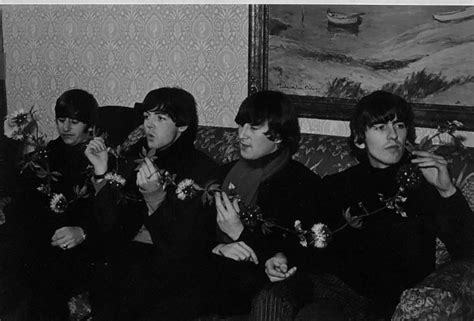

I send you flowers but you don't care You never seem to see me standing there I often wonder what you're thinking of I hope it's me and love love love
—Hello Little Girl (1957)
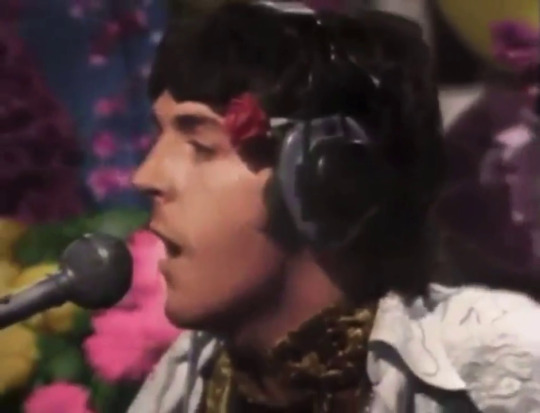
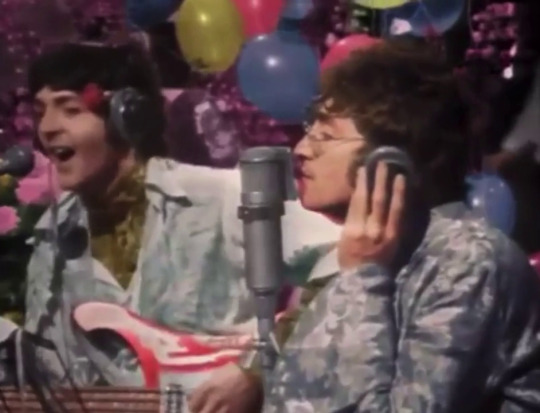
Follow her down to a bridge by a fountain Where rocking horse people eat marshmallow pies Everyone smiles as you drift past the flowers That grow so incredibly high
—Lucy In the Sky With Diamonds (1967)

Find me in my field of grass Mother Nature's son Swaying daisies, sing a lazy song Beneath the sun
—Mother Nature's Son (1968)

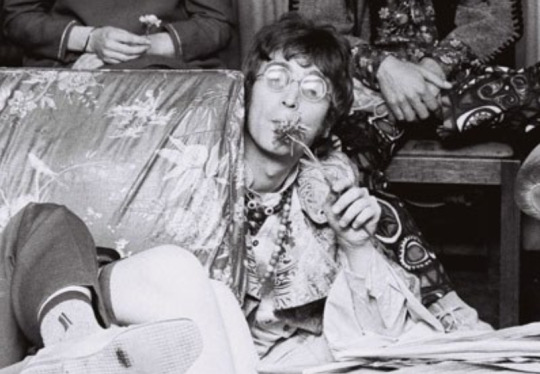
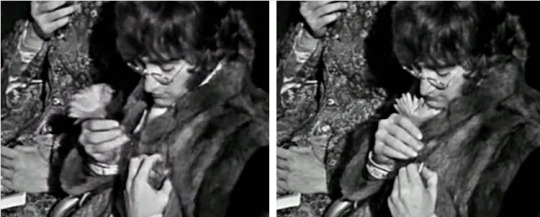
Songs that lingered on my lips excite me now And linger on my mind Leave your flowers at my door I'll leave them for the one who waits behind
—Goodbye (1968)
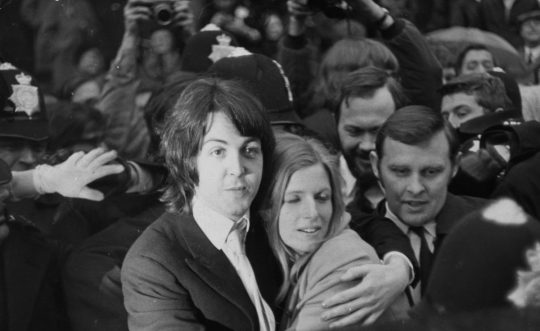

Some call it magic The search for the grail Love is the answer And you know that for sure Love is a flower You got to let it grow
—Mind Games (1970, 1973)



Sweep through the heather like deer in the glen Carry me back to the days I knew then Nights when we sang like a heavenly choir Of the life and the times of the Mull of Kintyre
—Mull of Kintyre (1977)
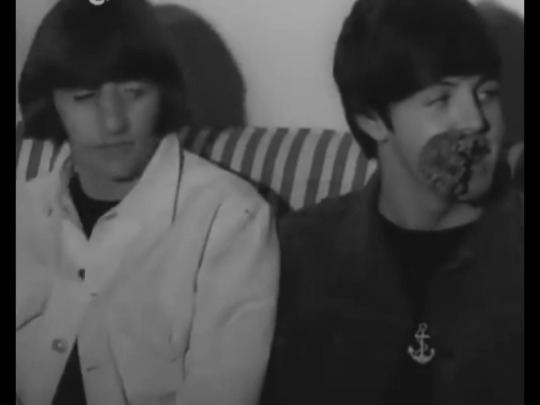

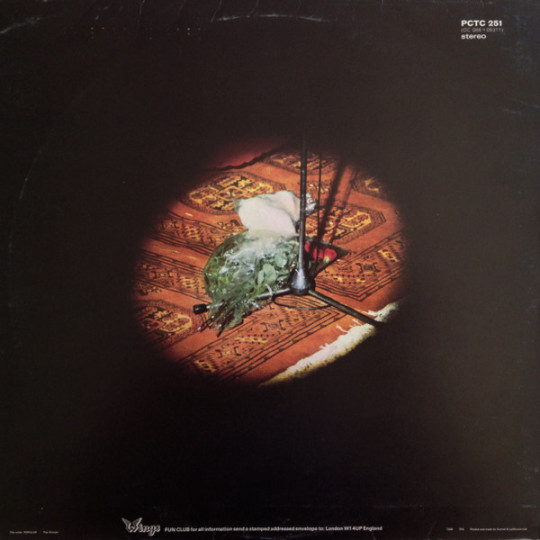
All through the summer, I have followed you around Bringing a rose for the winter that's coming Now the snow is on the ground... Love awake to the day When we can make our love awake
—Winter Rose/Love Awake (1978)
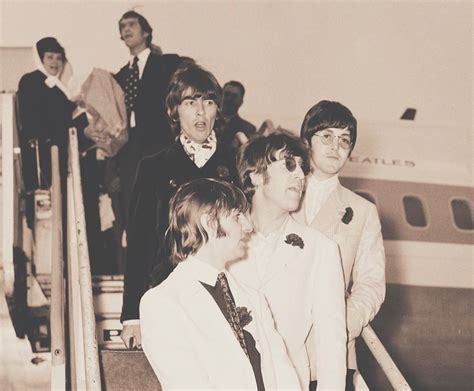
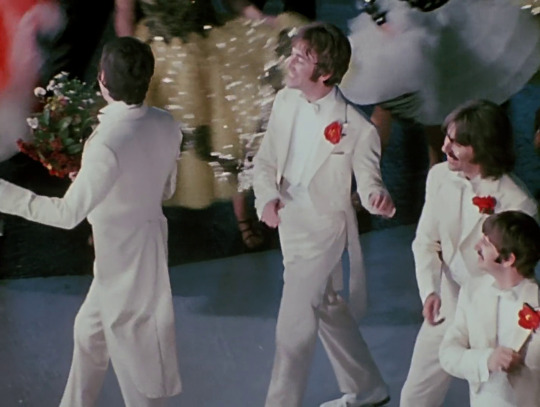

You want a love to last forever One that will never fade away I want to help you with your problem Stick around, I say Coming up, coming up, yeah Coming up like a flower Coming up, I say
—Coming Up (1979)


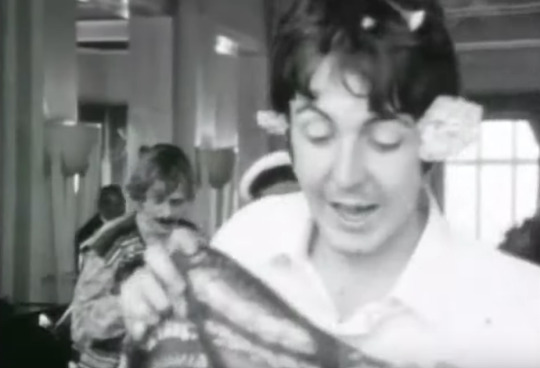
If you'll forgive me my little flower princess Never too late unless you can't forgive
Time is on our side Let's not waste another minute 'Cause I love you my little friend I really love you
Give me just one more chance And I'll show you, take up the dance Where we left off
—Forgive Me (My Little Flower Princess)** (1980)


After hours Late in the bar By a darkened corner seat Faded flowers wait in the jar Till the evening is complete
—Take It Away (1981)

She sprinkles flowers in the dirt That's when a thrill becomes a hurt I know I'll never see her face She walks away from my resting place
That day is done, that day is done You know where I've gone I won't be coming back That day is done
—That Day Is Done (1988)
#lennon mccartney#bugs with flowers#goodbye#thematics#threads#mine#coming up#grief#flowers in the dirt#I've been collecting a theme on bugs with flowers for ages now#but goodbye got stuck in my head and I suddenly realized the link with mind games and coming up#the whole flowers in the dirt album ate my brain last february#yes i know the verses are costello but he even credits paul for the chorus that brings it together#flower princess recalls a similar funky riff to coming up#so regardless of who its addressed to (seaman suggests may? yoko thought it was about her) the musical link to paul is there#added the photos and now i feel sick#im sorry i had no clue when i started this#forgive me i hit 30 before even getting to george :(#eta footnotes for breadcrumbs
54 notes
·
View notes
Text
Pearl Harbor Remembrance Day
Pearl Harbor Remembrance Day #Sailors #Navy #PoetryCommunity #MilitaryConflict #MIA
When I published this poem, “Pearl Harbor, We Remember” on my blog in 2016, commemorating the tragedy of Pearl Harbor, I had no idea that it would be recognized two years later and included in the story “Our View: Sailor comes home” in the Joplin Globe newspaper. This was humbling to me then, as it is now. The news article is about Seaman First Class Clifford George Goodwin who was missing in…

View On WordPress
#Military#Pearl Harbor#Pearl Harbor Remembrance Day#Poetry#Poetry Community#Seaman First Class Clifford George Goodwin#The Joplin Globe#War
4 notes
·
View notes
Text
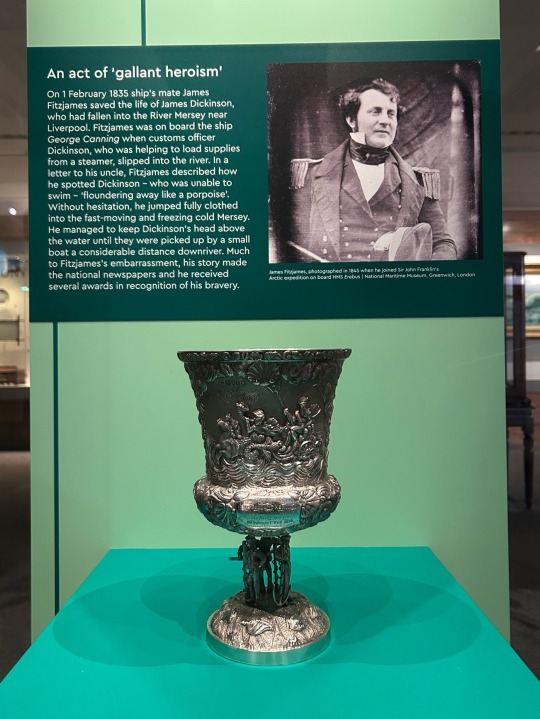

new James Fitzjames display thing in the National Maritime Museum in Greenwich - at least I’d say it’s new because I’ve been several times and never seen it before and it makes reference to his remains having been recently identified!
OBJECT IN FOCUS
An act of 'gallant heroism'
On 1 February 1835 ship's mate James Fitzjames saved the life of James Dickinson, who had fallen into the River Mersey near Liverpool. Fitzjames was on board the ship George Canning when customs officer Dickinson, who was helping to load supplies from a steamer, slipped into the river. In a letter to his uncle, Fitzjames described how he spotted Dickinson - who was unable to swim - 'floundering away like a porpoise'.
Without hesitation, he jumped fully clothed into the fast-moving and freezing cold Mersey.
He managed to keep Dickinson's head above the water until they were picked up by a small boat a considerable distance downriver. Much to Fitzjames's embarrassment, his story made the national newspapers and he received several awards in recognition of his bravery.

Presentation cup
E. Terry & Co., 1830-31
The Corporation of Liverpool presented this silver cup to seaman James Fitzjames at a celebratory dinner in February 1835 after he saved the life of James Dickinson. He later took it back to his ship, where it was filled with mulled port and the whole crew drank to his health. Fitzjames was also granted Freedom of the City of Liverpool, while the Royal Humane Society and the Royal National Lifeboat Institution (RNLI) awarded him silver lifesaving medals (the RNLI medal is also in the National Maritime Museum's collection).
MY CHOICE
'I chose this cup because the person it was awarded to deserves more recognition. James Fitzjames is a true maritime hero who I think history has neglected. After the act of bravery for which he was given the cup, Fitzjames went on to have a distinguished naval career, before losing his life during Sir John Franklin's ill-fated Arctic expedition (1845-48). Using DNA analysis, researchers finally identified his remains, recovered from King William Island, Canada, in September 2024. It was this moment that inspired me to suggest this object for display!
Suzy Jenvey, Visitor and Sales Assistant
251 notes
·
View notes
Text
Who was Davy Jones? [Nautical folktales]

This is something completely different from my usual posts. The nautical folk character of Davy Jones isn’t really a mythological creature in the same way as Mesopotamian demons, Inuit spirits or medieval European monsters.
In fact, it turns out the exact origin of the name is hard to pin down. ‘Davy Jones’ Locker’ was nautical slang for the bottom of the ocean, a euphemism used in the context of sinking ships and drowned sailors (as in, he went to Davy Jones’ Locker). As far as I can tell, this term for a seaman’s grave predates any reference to Davy Jones as a separate, actual character. Sailors who died at sea were said to ‘be keeping watch with Davy Jones now’.
As for the name, it’s not entirely clear where it came from but there are some theories. ‘Davy’ might be directly derived from ‘devil’, and according to other authors it might have come from ‘Duppy’, a Caribbean term also meaning devil, though this seems to be less supported. ‘Jones’ most likely comes from Jonah, the Biblical character and later nautical slang for a sailor who brings bad luck to the ship he is on.
It's not impossible that Davy Jones was (based on) a real person but it's not likely.

So, who is Davy Jones and what does he look like?
The oldest physical description of Jones as a being comes from ‘The Adventures of Peregrine Pickle’, a mid-18th century fiction novel by Tobias Smollett. I normally don’t use fiction novels as sources, but we don’t have anything else here and Smollett’s description of the creature seems to have become the basis for iterations of Davy Jones in media, so we might as well. In the book, Davy Jones is said to be a horrible fiend presiding over the wicked spirits of the oceanic depths. He is a monster with blue smoke billowing from his nostrils, a tail and a horned head with large saucer-like eyes and three rows of teeth.
And this is the description Davy Jones was stuck with until 2006, when Disney released Pirates of the Caribbean: Dead Man’s Chest, which featured the antagonist that you thought of when you saw the title of this post. This version of Davy Jones became so cemented in our collective consciousness that it’s hard to imagine him in any other shape or form. And, to be fair, it makes sense, because it was a good movie.
(Although it’s hard to beat the first one.)
Sources:
Norton, L A., 2016, Folklore, Superstitions and the Sea, The Northern Mariner/Le Marin du Nord, 26(1), p. 21-30.
Foster, J., 1969, Varieties of Sea Lore, Western Folklore, 28(4), pp. 260-266.
Archibald, M., 1998, Sixpence for the Wind: a Knot of Nautical Folklore, Dundurn, p. 45, 143 pp.
Smollett, T., 1751, The Adventures of Peregrine Pickle, London, p.71, 372 pp., text cited via Greensdictofslang.
(image 1: Davy Jones on his locker. Illustrated by John Tenniel for issue 103 of ‘Punch, or the London Charivari’, 1892)
(image 2: a character from ‘The Adventures of Peregrine Pickle’ disguises himself as Davy Jones to scare others, illustration by George Cruikshank in ‘Illustrations of Fieldeing, Smollett and Goldsmith, in a series of forty-one plates’)
#miscellaneous#Nautical folklore#mythical creatures#Aquatic creatures#world mythology#Pirates of the Caribbean#Davy Jones
45 notes
·
View notes
Photo

Lewis and Clark Expedition
The Lewis and Clark Expedition (1804-1806) was a US military expedition of exploration, led by Meriwether Lewis and William Clark, whose goal was to explore the newly acquired western lands that comprised the Louisiana Purchase and to reach the Pacific Ocean. The journey, which covered about 8,000 miles (13,000 km), was a major step toward the westward expansion of the United States.
Lewis, Clark, and their men – known as the Corps of Discovery – embarked on their journey on 14 May 1804. They moved up the Missouri River, crossed over the Rocky Mountains, and paddled down the Columbia River to the Pacific Ocean. After spending the winter of 1805-06 in present-day Oregon, the expedition began its return journey, arriving back in St. Louis on 23 September 1806, two years and four months after having first set out. The expedition succeeded in exploring the newly acquired western lands and giving the United States a better claim to the Oregon Country. They made around 140 detailed maps, marking out significant mountain ranges, rivers, and plains. The expedition also identified 178 types of plants and 122 animal species and subspecies that had previously been unknown to Euro-Americans.
Additionally, the Corps of Discovery encountered over two dozen Native American nations, some of whom had never encountered White people before. Most of the nations proved hospitable, some of them providing invaluable aid without which the expedition likely never would have succeeded. Sacagawea, a teenage Shoshone woman who had joined the expedition with her husband, acted as an interpreter between the explorers and native peoples they encountered, with her presence helping to assure the Native Americans that the expedition was not a threat. Lewis and Clark learned much about the languages and customs of the Native Americans they met, bringing many artifacts back with them.
Origins & Preparation
President Thomas Jefferson had long been fascinated with the American West. Though he would never travel further west than the Blue Ridge Mountains himself, he had always visualized this region as a land of vast untamed wilderness, where liberty and republicanism could thrive in spite of the corruption in the urbanizing East. Like many Americans before and after him, Jefferson believed the United States was destined to expand westward, to forge a so-called 'empire of liberty' that would one day encompass the entirety of the continent. As the American Revolutionary War was won in 1783, Jefferson was already trying to persuade famed war hero George Rogers Clark to lead a privately funded expedition into the West. Though Clark declined, Jefferson never gave up on his dream of a westward expedition.
After his election to the presidency in 1801, Jefferson finally had the opportunity to realize this ambition. By 1802, he had begun to plan the venture and appointed his private secretary, Meriwether Lewis, to lead it. Lewis was a 28-year-old Virginian, who had served in the militia during the suppression of the 1794 Whiskey Rebellion. He was just as enthusiastic as Jefferson about the West, and although Lewis lacked much formal education, Jefferson was confident in his abilities, writing that "Capt. Lewis is brave, prudent, habituated to the woods & familiar with Indian manners & customs" (Wood, 377). To better prepare the young man for leadership, Jefferson sent Lewis off to Philadelphia to study astronomy, medicine, cartography, ethnology, botany, lunar navigation, and other relevant subjects under the tutelage of some of the most renowned scientific experts in the country. While in Pennsylvania, Lewis purchased a Newfoundland dog named Seaman, who would remain his constant companion for the expedition.
Meriwether Lewis
Charles Willson Peale (Public Domain)
Initially, Jefferson presented the expedition as a merely scientific endeavor, to avoid arousing the suspicions of France, Spain, and Britain, who controlled the western lands that the president hoped to explore. This would change after the Louisiana Purchase in 1803, when France sold the entirety of the Louisiana Territory – some 828,000 square miles (2,145,000 km²) – to the United States. Now, Jefferson could be more open about his exploratory intentions, instructing Lewis to detail and map out as much of the newly acquired western lands as possible, and establish a viable route of travel across the continent. Still, the president hoped the expedition could continue across the Louisiana Territory to the Pacific Northwest, thereby establishing an American presence in the region before the European nations could settle it in earnest. Jefferson also hoped that they could find the fabled Northwest Passage, that was supposed to cut across the continent and link to the Pacific. The expedition still had scientific and anthropological purposes, of course, but the goal of laying claim to the entire northwest came first and foremost.
In the months leading up to the expedition, Lewis decided that he needed a co-commander, someone more experienced with military leadership. In July 1803, he invited William Clark, a 33-year-old army veteran and the younger brother of George Rogers Clark, to share the command. The US secretary of war denied Lewis' request to elevate Clark to the rank of captain and instead commissioned him as a lieutenant, since the concept of joint leadership violated the army's ideas of chain of command. Lewis nevertheless treated Clark as his equal during the expedition, and always referred to him as 'captain' to keep his lower rank a secret from the men. This proved to be a prudent decision. As historian Gordon Wood describes their joint command:
Lewis and Clark seem never to have quarreled and only rarely disagreed with one another. They complimented each other beautifully. Clark had been a company commander and had explored the Mississippi. He knew how to handle enlisted men and was a better surveyor, map-maker, and waterman than Lewis. Where Lewis was apt to be moody and sometimes wander off alone, Clark was always tough, steady, and reliable. Best of all, the two captains were writers: they wrote continually, describing in often vivid and sharp prose much of what they encountered – plants, animals, people, weather, geography, and unusual experiences.
(378)
So, with Clark onboard, Lewis went to the federal arsenal at Harper's Ferry, Virginia, to procure weapons while Clark went to Kentucky to enlist men for the expedition, which was now referred to as the Corps of Discovery. By December, the Corps consisted of 45 men, including officers, enlisted men, civilian volunteers, and York, an enslaved African American man owned by Clark. The Corps established Camp Dubois at the mouth of the Missouri River, 18 miles (29 km) away from St. Louis, where they spent the winter gathering supplies and training.
William Clark
Charles Willson Peale (Public Domain)
Continue reading...
35 notes
·
View notes
Text


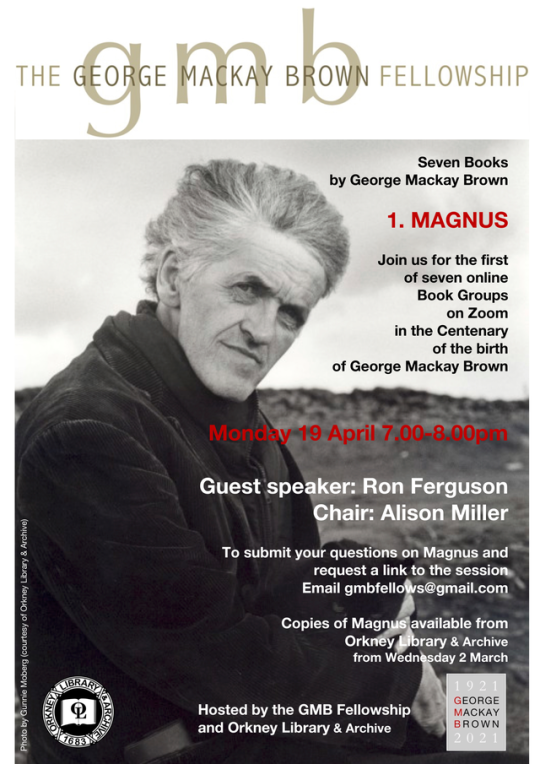
April 13th 1996 saw the death of the Orkney Poet and writer George Mackay Brown.
George Mackay Brown is perhaps Orkney’s best known author. He was born in Stromness in 1921 and his poetry, plays, novels and short stories continue to have an impact worldwide.
His work was inspired by Orcadian folklore – the myths, legends and sagas - Orkney’s Norse heritage, the natural landscape, his childhood and exploration of his faith. He wrote about his hometown of Stromness and chronicled the lives of the people who lived here and the way of life.
After six years as the Stromness correspondent for the Orkney Herald and a period recovering from tuberculosis, GMB, as he is often referred to in Orkney, from 1951 studied at Newbattle College in Midlothian under warden Edwin Muir, a fellow Orcadian writer. He went on to read English at Edinburgh University, returning to Orkney in 1961.
While in Edinburgh of course he drifted towards the crowd in Milnes Bar and into the company of Hugh MacDiarmid, Norman MacCaig and the likes. He met and fell in love with Stella Cartwright described as the bars muse and she was lover to a number of Scottish poets, they were briefly engaged but kept in touch until she passed away in 1985. He also features in the famouse painting by Alexander Moffat, The Poet's Pub, which will post below, it is on display in the National portrait gallery in Edinburgh.
Dubbed by some as the Orkney bard, his first book of poems sold out in days. Despite almost continual ill-health he continued to write and gained numerous prizes for his work. These included the James Tait Memorial Prize for his novel The Golden Bird: Two Orkney Stories. Beside the Ocean of Time was shortlisted for the Booker Prize and won the Scottish Book of the Year title from the Saltire Society. He was awarded the OBE and three honorary degrees.
His weekly column which ran for more than 25 years in The Orcadian from 1971 is in print in book form and gives an insight into his Stromness routines and his observations on a changing Orkney.
George Mackay Brown died in 1996 but his legacy lives on in his words, and in the George Mackay Brown Fellowship.
The George Mackay Brown Trail on Orkney will take you to many places connected with the man, details are on the link for his page.
Beachcomber by GMB is one of my favourites, I have also added The shortest day of the yea among the pics, the oem records the last rays of the sun on the shortest day as they shine through Maeshowe's entrance passage to illuminate the darkness of the chambered cairn.
The death of the old year, the birth of the new one as light begins to return.
Monday I found a boot – Rust and salt leather. I gave it back to the sea, to dance in.
Tuesday a spar of timber worth thirty bob. Next winter It will be a chair, a coffin, a bed.
Wednesday a half can of Swedish spirits. I tilted my head. The shore was cold with mermaids and angels.
Thursday I got nothing, seaweed, A whale bone, Wet feet and a loud cough.
Friday I held a seaman’s skull, Sand spilling from it The way time is told on kirkyard stones.
Saturday a barrel of sodden oranges. A Spanish ship Was wrecked last month at The Kame.
Sunday, for fear of the elders, I sit on my bum. What’s heaven? A sea chest with a thousand gold coins.
13 notes
·
View notes
Text
Pre-1936 seat assignments at the Pacific Coast Regatta
(I'm still working on Bobby's freshman boat in '33, but I know it included Frank Marlovich (same as Frank Marolich????) and Bradley McMichael (an alternate for the 1935 JV boat))
April 13, 1934
Freshman boat, bow to stern: Arthur "Bud" Schacht, Roger Morris, Bob Green, Delos "Dutch" Schoch, Charles "Chuck" Hartman, Joe Rantz, George "Shorty" Hunt, George Lund, George Morry
JV boat, bow to stern: Robert May, Samuel Mills, Walter Bates, Peter Lewis, Karl Oberleitner, Sidney Lund, Robert Ingram, Oluf Johnson, Bob Moch
Varsity boat, bow to stern: Bob White, Wilbur Washburn, Ed Moore, Victor Carter, Frank Marolich, Alden "Bob" Snider, Walter "Bud" Raney, Ed Argersinger, Harvey Love
April 6, 1935
Freshman boat, bow to stern: Bob Murray, Johnny White, Merton Hatch, Don Coy, Gordy Adam, William Seaman, Don Canfield, Don* Hume, Earl Schenck
JV boat, bow to stern: Bob White, Charles "Chuck" Day, Walter Bates, Alden "Bob" Snider, Jim McMillin, Sid Lund, Walter "Bud" Raney, John York, Bob Moch
Varsity boat, bow to stern: George Lund, George "Shorty" Hunt, Joe Rantz, Charles "Chuck" Hartman, Delos "Dutch" Schoch, Bob Green, Roger Morris, Arthur "Bud" Schacht, George Morry

*Don Hume, or, as the Tacoma Daily Ledger would say, Bone Hume
#so so interesting to see the seat swaps in joe's boat from freshman to sophomore year#rip to my chuck/roger two seat rivalry dreams tho <3#bud raney is the same bud raney who is frosh coach with bobby!!!#the boys in the boat#tbitb
8 notes
·
View notes
Text
THIS DAY IN GAY HISTORY
based on: The White Crane Institute's 'Gay Wisdom', Gay Birthdays, Gay For Today, Famous GLBT, glbt-Gay Encylopedia, Today in Gay History, Wikipedia, and more … January 9

Your Due Date: January 9, 2025

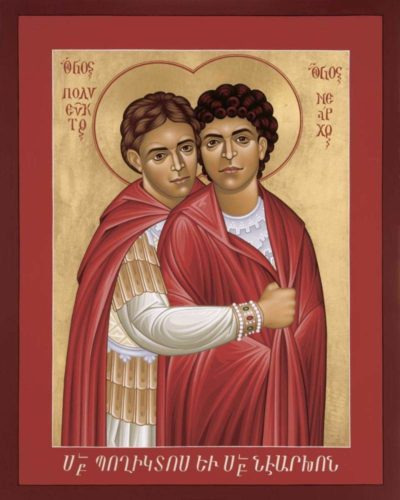
259 – Died: Saint Polyeuct, lover of Saint Nearchus. Soldiers in the Roman army and deeply attached to each other, Polyeuct and Nearchus were both stationed in Militene, Armenia. The earliest account of Polyeuct's martyrdom was written by Nearchus.
The primary thread of their story is the desire of these two friends to spend eternity together. According to the text, when the emperor issued a new edict against Christians, Nearchus was worried that, since Polyeuct was a pagan and Nearchus a Christian, his own possible martyrdom and the eventual death of Polyeuct might lead to their being in separate places in the afterlife. Polyeuct reassured him that he had long been drawn to Christianity and intended to die a Christian. With a convert's fervor, Polyeuct then attacked a pagan procession and had himself arrested. The judge turned out to be his own father-in-law, Felix, who begged him to reconsider.
Polyeuct's wife, Paulina, came to court and unsuccessfully implored him, for the sake of their marriage and their son, to change his mind. After severe tortures, he was condemned to death. Just before he was beheaded, Polyeuct saw Nearchus near. His final words to Nearchus were "Remember our secret vow."
Nearchus was later martyred, being buried alive.
Before his own death, Nearchus recorded this story, which was recounted annually at the church at Militene and eventually erected over Polyeuct's tomb in Militene. In the year 527, a great church with a gold-plated ceiling was built in Constantinople and dedicated to St. Polyeuct. Later in the same century, Gregory of Tours wrote that the most solemn oaths were usually sworn in this church; because Polyeuct had come to be considered the special heavenly protector of vows and avenger of broken promises.

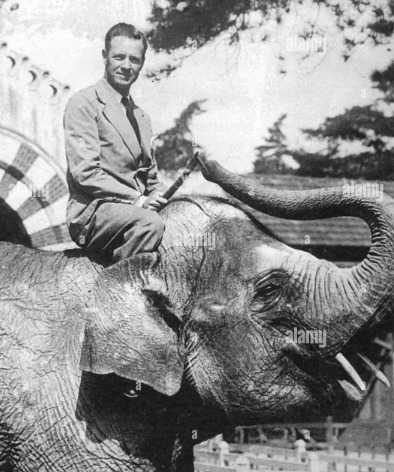
1900 – Richard Halliburton (presumed dead after March 24, 1939) was an American traveler, adventurer, and author. Best known today for having swum the length of the Panama Canal and paying the lowest toll in its history—thirty-six cents—Halliburton was headline news for most of his brief career. His final and fatal adventure, an attempt to sail a Chinese junk, the Sea Dragon, across the Pacific Ocean from Hong Kong to the Golden Gate International Exposition in San Francisco, made him legendary.
Richard Halliburton was born in Brownsville, Tennessee. The family moved to Memphis, where he spent his childhood. He attended Memphis University School. He also showed promise as a violinist, and was a fair golfer and tennis player. In 1915 Richard developed a rapid heart condition and spent some time at the Battle Creek Sanitarium in Michigan, run by the innovative John Harvey Kellogg, whose philosophy of care featured regular exercise, sound nutrition, and frequent enemas.
Leaving college temporarily during 1919, Halliburton became an ordinary seaman and boarded the freighter Octorara bound from New Orleans to England. He toured historic places in London and Paris, but soon returned to Princeton to finish his schooling. Travel inspired in him a lust for more travel.
Halliburton idolized mountain climber George Mallory, who died in 1924 while trying to climb Mt. Everest. He knew and admired aviatrix Amelia Earhart. He knew journalist Lowell Thomas, who had made Lawrence of Arabia a living legend. Halliburton craved the celebrity of Rudolph Valentino, the great romantic screen star of the silent era. Richard was acquainted with and looked up to swashbuckling cinema star Douglas Fairbanks, Sr., who was also a world traveler.
Halliburton's first book, published in 1925, The Royal Road to Romance, became a bestseller. Two years later he published The Glorious Adventure, which retraced Ulysses' adventures throughout the Classical Greek world as recounted in Homer's The Odyssey, and which included his visiting the grave of English poet Rupert Brooke on the island of Skyros. In 1929 Halliburton published New Worlds To Conquer, which recounted his famous swim of the Panama Canal, and his retracing the track of Cortez' conquest of Mexico.
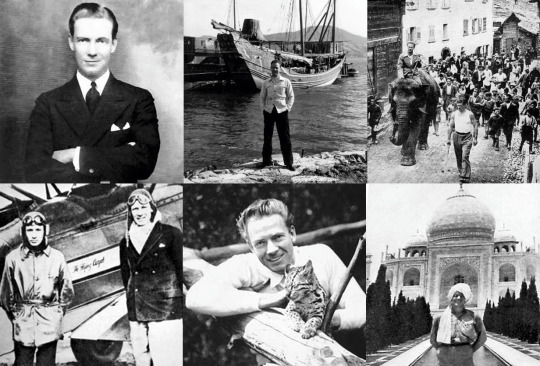
(Click for larger)
Halliburton's sexual associations with members of his own sex became apparent. To protect the image of heroic masculinity he had cultivated to win over an admiring public, he kept secret his true sexual orientation. He seems also to have kept it a secret from his doting parents, who longed for grandchildren from their one surviving son. Among those romantically linked to him were film star Ramón Novarro and philanthropist Noel Sullivan, both of whom shared his enjoyment of the bohemian lifestyle. Halliburton's most enduring relationship was with freelance journalist Paul Mooney, with whom he often shared living quarters and who assisted him with his written work.
In 1931 Halliburton hired pioneer aviator Moye Stephens on the strength of a handshake —for no pay, but unlimited expenses —to fly him around the world in an open cockpit biplane. The modified Stearman C-3B was named the Flying Carpet after the magic carpet of fairy tales, and this became the title of his 1932 best-seller. They embarked on "one of the most fantastic, extended air journeys ever recorded" taking 18 months to circumnavigate the globe, covering 33,660 miles (54,100 km) and visiting 34 countries.
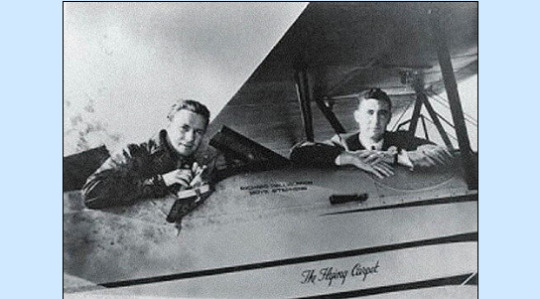
Halliburton (R) with Moye Stephens
On March 3, 1939, Halliburton began to sail a Chinese junk across the Pacific Ocean. The Sea Dragon, a gaudily decorated 75-foot (23 m) junk, was made to his commission in the shipyards of Kowloon by cartwright Fat Kau. Emblazoned with a colorful dragon and equipped with a diesel engine, the Sea Dragon was supposed to make its maiden voyage from Hong Kong to the Golden Gate International Exposition in San Francisco (at Treasure Island).
Three weeks out to sea on March 23 the ship encountered a typhoon. The junk was last sighted by the liner SS President Coolidge, itself battling mountainous seas some 1900 km west of Midway Island. That was the last seen the junk. After an extensive US Navy search with several ships and scout planes over thousands of square miles and many days, the effort was ended. In 1945 some wreckage identified as a rudder and believed to belong to the Sea Dragon washed ashore in California.
Missing at sea since March, Halliburton was declared dead on October 5, 1939 by the Memphis Chancery Court.

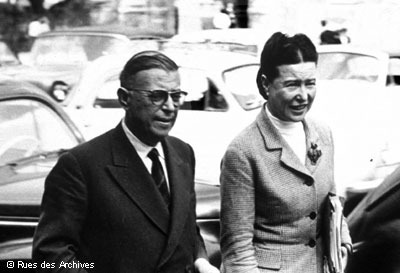
Simone de Beauvoir (R) with Jean-Paul Sartre
1908 – Simone de Beauvoir (d.1986) is best known for her revolutionary study of women's condition, The Second Sex (1949), a work that changed women's lives worldwide. In 1999, an international colloquium was held in Paris to celebrate the fiftieth anniversary of The Second Sex. The conference included a number of papers on Beauvoir and lesbianism, a topic that, a decade earlier, would have been virtually unthinkable.
In 1990, however, when Beauvoir's journals and two volumes of her letters to Jean-Paul Sartre were made available, it became clear that Beauvoir had had a number of same-sex relationships throughout her life. These revelations, along with others, completely shattered the heretofore unassailable myth of Simone de Beauvoir and Jean-Paul Sartre as the twentieth century's most perfect couple. Today, Beauvoir's same-sex relationships are widely acknowledged, although attempts to excuse them (as "bohemian existentialist experimentation," to give but one example), in the interest of preserving Beauvoir's heterosexual image, persist.
Beauvoir was born in Paris into a bourgeois Roman Catholic family. Her family's fortunes declined after World War I, but she was nevertheless the beneficiary of an expensive private education. She then studied philosophy at the Sorbonne, where she met Sartre in 1929.
From 1931 to 1941 Beauvoir taught philosophy in secondary schools in Marseilles, Rouen, and Paris. In 1943, she published her first novel, L'Invitée, one of several fictional works dealing with her relationship with Sartre.
Although she herself seems not to have been involved in resistance efforts during the Nazi occupation of Paris, in 1945, soon after the end of World War II, she published Le Sang des autres, a novel reflecting on the question of political involvement and the French Resistance.
The feminist classic The Second Sex followed in 1949 and was eventually to make her reputation. Her strongest novel, Les Mandarins, appeared in 1954; a semiautobiographical work, it too focused on her relationship with Sartre, the subject that has preoccupied both her autobiographical works and the scholarship devoted to her life and work.
Beauvoir's same-sex relations, characterized by intense emotion and in most cases with a confirmed sexual component, likely began with Beauvoir's school friend "Zaza." Several of these relationships occurred during Beauvoir's career as a philosophy teacher during the 1930s and 1940s, and involved her students (who seemed to be the initiators, able to resist neither Beauvoir's physical nor her intellectual magnetism).
In one case, Beauvoir's rendez-vous were structured around philosophy lessons. Exasperated at having to discuss Kant before climbing into Beauvoir's bed, the student Nathalie Sorokine called Beauvoir "a clock in a refrigerator." When Sorokine's mother complained to the school, Beauvoir was fired, effectively ending her teaching career.
When Beauvoir was asked point blank in an interview if she were a lesbian, she angrily denied it. It should be noted, however, that Beauvoir tended to define things narrowly (she also claimed she was not a philosopher, again according to a strict definition). For Beauvoir, a lesbian is a woman who refuses to have anything (sexual) to do with males.
Further, Beauvoir was a major participant in the public erasure of her lesbian identity. A comparison of the unpublished diaries with published works shows a very different representation of the relationship with Zaza in Beauvoir's autobiography Memoirs of a Dutiful Daughter (1958) or of Beauvoir's lover Olga as the fictional Xavière in her novel She Came to Stay (1943). It has only recently been recognized that Beauvoir was the model for the lesbian Inès in Sartre's No Exit (1944).
In the early 1960s, Beauvoir began a relationship with Sylvie le Bon which lasted to the end of Beauvoir's life. In 1980, following Sartre's death, Beauvoir adopted Sylvie so that the latter could legally care for Beauvoir, who was to die six years later. Their relationship offers a model of the lesbian couple described theoretically in The Second Sex.

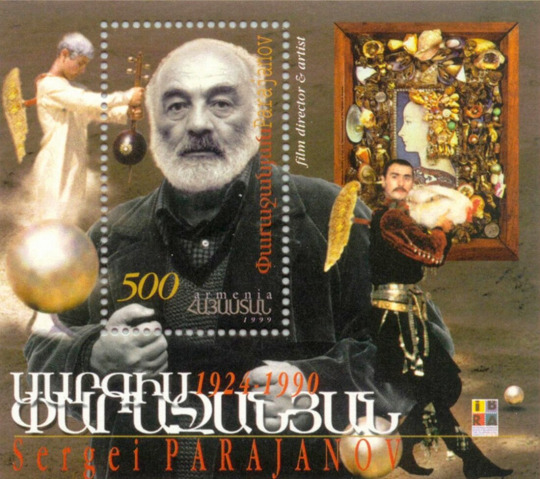
1924 – Sergei Parajanov sometimes spelled Paradzhanov or Paradjanov; (d.1990) was an Armenian film director and artist from the Soviet Union who made significant contributions to Ukrainian, Armenian and Georgian cinema. He invented his own cinematic style, which was totally out of step with the guiding principles of socialist realism (the only sanctioned art style in the USSR). This, combined with his controversial lifestyle and behaviour, led Soviet authorities to repeatedly persecute and imprison him, and suppress his films.
In 1948 he was convicted of homosexual acts (which were illegal at the time in the Soviet Union) with a MGB officer named Nikolai Mikava in Tbilisi. He was sentenced to five years in prison, but was released under an amnesty after three months. In video interviews, friends and relatives contest the truthfulness of anything he was charged with. They speculate the punishment may have been a form of political retaliation for his rebellious views.
Although he started professional film-making in 1954, Parajanov later disowned all the films he made before 1965 as "garbage". After directing Shadows of Forgotten Ancestors (renamed Wild Horses of Fire for most foreign distributions) Parajanov became something of an international celebrity and simultaneously a target of attacks from the system. Nearly all of his film projects and plans from 1965 to 1973 were banned, scrapped or closed by the Soviet film administrations, both local and federal, almost without discussion, until he was finally arrested in late 1973 on charges of rape, homosexuality and bribery. He was imprisoned until 1977, despite a pleas for pardon from various artists.
Even after his release (he was arrested for the third and last time in 1982) he was a persona non grata in Soviet cinema. It was not until the mid-1980s, when the political climate started to relax, that he could resume directing. Still, it required the help of influential Georgian actor Dodo Abashidze and other friends to have his last feature films greenlighted.
His health seriously weakened by four years in labor camps and nine months in prison in Tbilisi, Parajanov died of lung cancer in 1990, at a time when, after almost 20 years of suppression, his films were being featured at foreign film festivals. In January 1988, he said in an interview, "Everyone knows that I have three Motherlands. I was born in Georgia, worked in Ukraine and I'm going to die in Armenia."


1941 – Joan Baez is nothing less than a legend, both as a folk musician and as a catalyst for social change. A singer, guitarist, and songwriter with eight gold records and six Grammy nominations thus far, Baez has long been visible as a protest figure supporting civil rights, peace efforts, and human rights through her direct activism and numerous free concerts.
Born on Staten Island, New York to a Scottish mother and Mexican-American father, Baez moved with her family to California when she was a small child. She lived in Baghdad from 1951 to 1952; there, confronted with rampant poverty and human suffering in the streets, she first realized her passion for social justice.
Baez stood out as an artistic nonconformist and peace activist in her high school in Palo Alto, California, and then at Boston University—where she remained for only a short time. She had begun playing at local coffeehouses and decided to drop out of school in 1958 to concentrate on her musical career.
Baez started playing in clubs such as Gate of Horn, which belonged to impresario (and Baez's future manager) Albert Grossman, and appearing with well-known musicians such as Pete Seeger.
In 1960 her first album, Joan Baez, was released to huge acclaim. Gifted with an extraordinarily beautiful voice, she also brought an unusual intelligence to the interpretation of folk songs, both traditional and new.
Baez became increasingly involved with the civil rights movement, using her growing fame as a means of drawing attention to a cause she believed in deeply. She especially worked in conjunction with Dr. Martin Luther King, Jr.; Dr. King's speeches and Baez's singing were a staple of demonstrations and rallies during the turbulent 1960s.
Baez also became very active in promoting nonviolence. During the Vietnam War, she visited Hanoi for thirteen days to witness the horrors of war herself, and for ten years she withheld the percentage of her income taxes that would have been put toward military expenses. In 1967, she was arrested twice—and jailed for a month—for blocking the entrance of the Armed Forces Induction Center in Oakland, California.
All the while she continued recording albums in her signature clear soprano, both writing her own material and performing classic songs of resistance such as "We Shall Overcome," "Oh, Freedom," and "Where Have All the Flowers Gone?"
She founded both the Institute for the Study of Nonviolence (now The Resource Center for Nonviolence) in California in 1965 and the Humanitas International Human Rights Committee, which she headed from 1979 until its demise 13 years later.
Although she may be most famous for her civil rights and peace activism, Baez has also been prominent in the struggle for gay and lesbian rights.
She has been open about the relationship she had with a woman in 1962; in an interview a decade later, she told a reporter that she basically considered herself bisexual, a statement she stood by despite the controversy it sparked. She did marry activist David Harris in 1968, and had their son Gabe in 1969; although the couple eventually divorced, Baez never again pursued a lesbian relationship.
Still, she has been visible in the gay community; in 1978 she performed at several benefit concerts to defeat Proposition 6 (the Briggs Initiative), which proposed banning all openly gay people from teaching in the public schools of California. Later that year, she participated in memorial marches for the assassinated San Francisco city supervisor, openly gay Harvey Milk.
Alongside Janis Ian, she played a benefit for the National Gay and Lesbian Task Force in 1994, and has performed numerous times with the lesbian duo the Indigo Girls.


1994 – Elijah Daniel is an American comedian, rapper, and author. He became popular online through his comedy on YouTube and social media. Daniel is the author of the erotic novel Trump Temptations. His book went viral, and saw significant sales the day it was published; rising to the top of sales lists in multiple categories. Daniel's book received favorable reception. Trump Temptations became the top seller on Amazon.com in three categories: humorous erotica, LGBT erotica, and gay erotica.
Elijah Daniel was born in Detroit, Michigan. He was raised evangelical Christian. After his grandmother became ill, Daniel moved into her residence to care for her. During this period, he began to write comedy to occupy himself. He publicized his comedy work through posts on Twitter, and videos to Vine.
Daniel led an online White House petition in 2013 to make the Miley Cyrus song "Party in the U.S.A." the U.S. national anthem. It received international coverage. Starting in 2014 Elijah began hosting a weekly internet prank with CollegeHumor called Text Prank Thursday, where he would have his Twitter followers text random phone numbers saying whatever he told them to say. Daniel told Vice that he cultivated a group of followers online who appreciated his absurd and bizarre comedic antics. By 2016, his Twitter following had grown to over 95,000.
In 2016 Daniel stated on Twitter that he was going to get drunk and write an erotic novel starring Donald Trump. Daniel was inspired by a tweet which said the user wished to perform a sex act on Bernie Sanders. Daniel wrote the work as a parody of Fifty Shades of Grey. Within four hours, he had released the erotic novel titled Trump Temptations: The Billionaire & The Bellboy on Amazon. The work was Daniel's debut novel.
Trump Temptations became the number one best seller on Amazon.com in three categories: humorous erotica, LGBT erotica, and gay erotica.The book was listed on Amazon above Fifty Shades of Grey by E. L. James, and was featured in The Washington Post, Daily News, Los Angeles Times, GQ, Gay Star News, London Evening Standard, The Daily Telegraph, and Vice. The Guardian classed the work as part of the "small but burgeoning new genre: satirical books about Donald Trump" that began with the 2016 presidential campaign. Cosmopolitan called the book a literary success.
Daniel hired Trump impersonator Chris Ferretti to read the audiobook.
Trump biographer Marc Shapiro wrote in Trump This!, that Daniel's novel was one of the most infamous works capitalizing on interest in Trump. An article in Fortune said that Daniel displayed a Trump-like skill to capitalize on a niche demand.
After the Orlando nightclub shooting in June 2016, Daniel publicly urged on Twitter for any individual who is closeted to feel free to contact him privately for support, and he published "An open letter to the LGBT kids who feel lost and scared" on Fusion.net. The letter positively received by ATTN:, which called it a powerful commentary on the attack.
On August 30, 2017, Elijah Daniel performed a publicity stunt centered around Hell, Michigan – an unincorporated town that allows visitors to pay for the opportunity to hold the title of "mayor" for a day. In what he called "a copy-and-paste of Trump's Muslim ban", he announced a satirical law that banned heterosexuals from entering and living in the town. In response, Daniel released an edited version of The Bible called "The Holy Bible… but Gayer" two weeks later. Sales of it were briefly banned on Amazon before being restored.

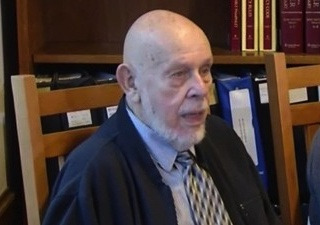
2016 – When Hubert Edward Spires was twenty years old, he decided to serve his country by joining the military. Because he was a gay man in a very different time, though, he was removed through an "undesirable" discharge. On this day in 2016, the 91-year-old Connecticut man finally received the honorable discharge he was denied 68 years ago.
In 1946, he joined what was then called the U.S. Army Air Force and became a chaplain's assistant at Lackland Air Force Base in San Antonio. Spires quickly took to the work, which included writing letters to families worried about their loved ones, playing organ during Catholic Mass and preparing the chapel for various services. When it became known that he was a homosexual he was given an "undesirable" discharge.
Because of the repeal of Don't Ask, Don't Tell in 2010, it became possible for Spires to apply to have the status of his discharge changed. The 91-year-old Spires filed a federal lawsuit seeking an honorable discharge so he can receive a military burial.The Air Force has changed the 91-year-old's records to an honorable discharge. Spires said, "I can go to my grave with my head held high."


13 notes
·
View notes
Text
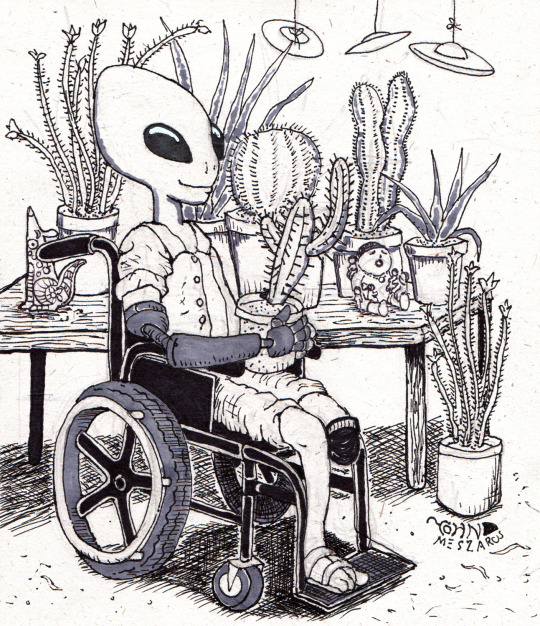
ROSWELL ALIENS- NEW MEXICO
Finally finished all 50 State Cryptids! Time to start putting them together into a book!
I always have a bit of a quandary whenever I showcase an alien as a “State Cryptid”. For many people the term “cryptid” typically refers to unknown Earthly animals. But over time this blog has evolved into more of an overall tour of speculative creatures in American pop culture and folklore where the lines between “natural animal”, “supernatural entity”, and “extraterrestrial” become very blurry. I’m also much more interested in the history behind these sightings than the classification of each creature, or even whether it plausibly exists at all. Plus I’ve already featured several extraterrestrials already such as the Pascagoula creatures, the North Dakota Meccano-Mummy, and the Grays that allegedly abducted Barney and Betty Hill.
June 14, 1947- Rancher W.W. “Mac” Brazel and his son were driving on their property 80 miles outside of Roswell, New Mexico when they came upon “a large area of bright wreckage made up of rubber strips, tinfoil, and rather tough paper, and sticks.” What was it? They had no idea.
Initially unsure about what to do with the strange find, Brazel collected some of the debris a few days later and drove it into Roswell to give to Sheriff George Wilcox. The sheriff, equally perplexed, contacted the nearby Roswell Army Airfield’s 509th Composite Group. They sent a team out to the desert to collect the remaining debris and ascertain what it was. A few days later Major Jesse Marcel made a statement to the local paper about the incident. Though he didn’t explain exactly what the object was, headlines claimed the army had captured a “flying saucer”.
Flying saucers were in the news a lot that year. On June 24th, 1947 amateur pilot Kenneth Arnold reported seeing an airborne, disk-shaped vehicle near Mt. Rainier in Washington. Later, Navy seaman Harold Dahl claimed he had seen a whole group of the strange objects on June 21st near Puget Sound. Soon people were sighting flying saucers everywhere. Much of this hysteria was fueled by fears of the growing power of the Soviet Union and worries about what secret experiments they might be conducting. Paranoia about unknown Russian flying vehicles soon turned upwards beyond the boundaries of Earth as people began to speculate that flying saucers actually came from other worlds. These mysterious objects were labeled UFOs- Unidentified Flying Objects- by the US military and the term quickly caught on in popular culture. Though UFO originally just meant an unknown aerial object, with no indication of origin, it became synonymous with extraterrestrial spacecraft.
Eventually the army explained that the debris found near Roswell had come from a downed weather balloon. But such a prosaic explanation did not stick with the public. The idea that creatures from outer space had crashed on Earth had firmly taken hold, and a good number of people believed that this “weather balloon” story was just a flimsy cover-up. It certainly didn’t help that the government was tight-lipped about many of its programs out of fear that the Soviets might get wind of them.
It turns out, though, that the weather balloon story was actually close to the truth. In the late 1940s the government began Project MOGUL, in which massive balloons equipped with sensitive detection instrument were launched high into the ionosphere to look for signs that Russia was testing nuclear weapons. One of these balloons had fallen out of the sky, crashed on Brazel’s ranch. Not wanting to reveal their secret project, military officials had felt it was better to let the “alien spacecraft” idea percolate in the popular imagination instead.
A decade later In the 1950s rumors cropped up that people had seen government agents collecting alien bodies in the New Mexico desert. These stories were soon conflated with the Roswell crash legend, leading to conspiracy theories about frozen alien corpses preserved in secret government hangers. For many years any secretive government sight was rumored to have “aliens in the freezers”. Eventually accusations settled on Area 51, a classified military base in the Nevada desert.
These reports too had a more down-to-Earth explanation, though. Investigations revealed that the “alien bodies” had actually been special crash dummies fitted with sensors and dropped from airplanes by the Airforce to test the effects of high-altitude parachute drops. Like Project MOGUL, these tests had been hidden behind a thick veil of secrecy which did little to dispel the rumors.
As for Area 51, though the government denied its existence for decades despite clear evidence that it existed, it was officially confirmed in 2013 as a base for testing experimental aircraft such as the U2 spy plane, the Archangel-12, the SR-71 Blackbird, and others. No word on frozen alien corpses, though. By the way, the name “Area 51” is more of a pop culture term. The base is typically just called “Groom Lake”, “Homey Airport”, or simply the “Nevada Test and training Range” by the CIA.
The Roswell Aliens story gained a major surge in popularity in the 90s with shows like “The X-Files” and “Dark Skies”, movies like “The Arrival” and “Independence Day”, and comic books like “Roswell, Little Green Man” by Bill Morrison. There was even a 1995 psuedo-documentary called “Alien Autopsy: Fact or Fiction” produced by the Fox Network and hosted by Star Trek actor Jonathon Frakes. It allegedly showed vintage footage of the dissection of an alien corpse from the Roswell crash. This video was eventually revealed to be a hoax, with the corpse actually a rubber dummy stuffed with jam and animal organs from a butcher.
For my depiction of the Roswell aliens, I wanted to get away from the typical images of corpses lying on dissection tables or floating in preservative-filled tubes. I also wanted to avoid the trope of aliens as malicious, terrifying invaders like in Independence Day or any number of B horror movies.
Instead, I chose to portray them as normal beings adapting to a new life on Earth. Here we see one of the aliens recovered from their crash with the help of a wheelchair and prosthetics. I’ve imagined them setting up a new life for themselves in New Mexico, just trying to keep to themselves. They’ve taken a keen interest in their new home, evident in their collection of local plants like ocotillo and yucca. They’ve also made friends with many locals, including Indigenous communities, evident here in the “Singing Mother” figure on the table. These figures were first created in 1964 by artist Helen Cordero of the Pueblo de Cochiti, a community of the Keres Pueblo peoples.
As immigrants themselves, the Roswell Aliens also feel a kinship with the many other people that have moved to New Mexico from other countries. This is reflected in the alebrije they got from a Oaxacan-born artist.
REFERENCES
The Roswell UFO Festival!
A Smithsonian article on the crashed MOGUL balloon
An article from History.com about the Roswell incident
An article from the Chicago tribune about the high-altitude dummies that were mistaken for alien bodies.
A Space.com article about Area 51
An article about the infamous "Alien Autopsy" pseudo-documentary
Another article about the "Alien Autopsy" film
45 notes
·
View notes
Text
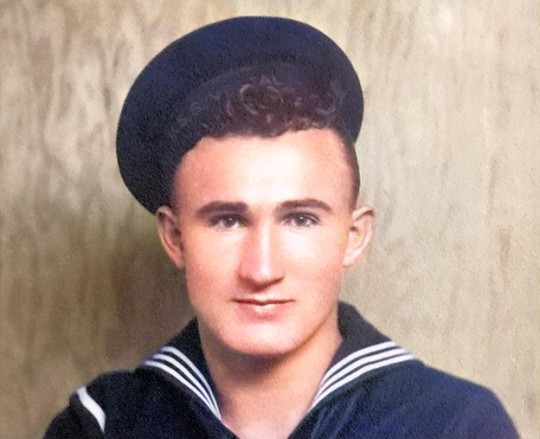
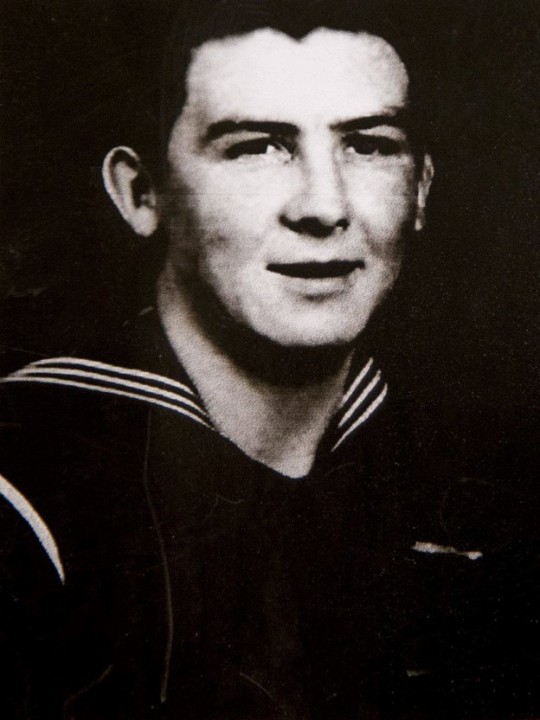


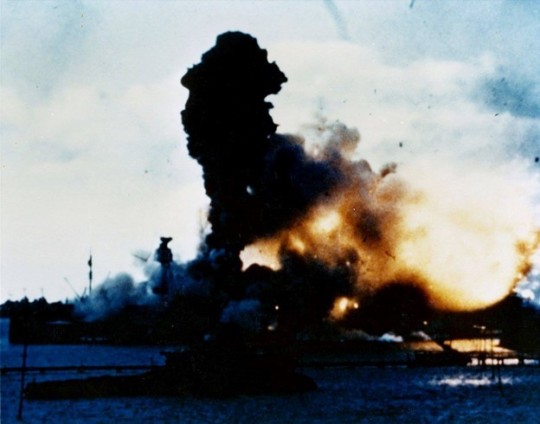

Raw Courage
Christmas Day 1941 Seaman First Class Donald Stratton arrived at the Mare Island Hospital with life threating burns over much of his body. A little over two weeks before he was trapped with six shipmates high above the main deck on the sky control platform of the battleship USS Arizona (BB-39). A surprise attack by aircraft of the Imperial Japanese Navy had turned the battleship into a burning hell on earth from which there could be no escape. As he told the story "A bomb blew up the forward magazine of the USS Arizona and the ship was engulfed in flames. I and five others were located on the anti-aircraft gun director’s platform above the bridge when the forward powder magazine blew. All of us were badly burned. I was burned over 80% of my body. At that point, the only possibility to evacuate the ship was to dive in the water, which was 80 feet below and was fully engulfed in flame. That was not an option for survival.”
The United States was at peace as earlier when General Quarters sounded aboard the USS Arizona while moored at the huge naval base at Pearl Harbor. Japanese planes had just been sighted bombing nearby Ford Island. Hearing the alarm, Seaman Stratton rushed to his battle station as a sight setter in the Port Anti-Aircraft fire director. Within minutes of his arrival at his battle station a Japanese high-altitude bomber dropped an armor piercing bomb that tore through the deck of the ship and ignited a million pounds of explosive, and thousands of gallons of aviation gas and fuel oil. The massive explosion completely enveloped Stratton’s battle station as the ship settled to the bottom of the harbor, her back broken and her sides blown out. Trapped above the flaming wreckage Stratton and six others were saved when another sailor, Joe George, aboard the repair ship USS Vestal that was moored alongside the Arizona acted. Despite direct orders Joe George threw the men a line and refused to cut it until the men made it to safety. Stratton and five other survivors from the sky control platform managed to make it over the flaming seas surrounding the burning hulk of the Arizona to the deck of the Vestal by climbing hand over hand down the line as the Japanese continued to attack.
The burns on Stratton’s arms were so bad that his skin sloughed off as he worked his way down the line to the Vestal. With burns over much of his body he was taken to the Naval Hospital at Pearl which was overwhelmed with patients. The decision was made to evacuate some of the patients to the mainland thus Seaman Stratton and 196 other seriously wounded sailors and Marines were transported on the blacked-out transport USS Scott arriving at the Mare Island Hospital on Christmas Day 1941. Seaman Stratton was successfully treated at Mare Island with what were then innovative burn treatments for several months until he was transferred to Corona, California for a convalescence. Due to the severity of the damage to his arm and leg he was medically discharged in September 1942. Unbelievably, when his injuries allowed, Donald Stratton re-enlisted in the Navy and went aboard the destroyer USS Stack at Naval Station Treasure Island in 1944. Aboard the Stack Seaman Stratton turned the tables on the enemy as he and the Stack participated in the invasions of New Guinea, Halmahera, Leyte, Luzon and Okinawa.
After the war Stratton took up the cause to secure a posthumous medal for Joe George, the sailor from the Vestal who helped rescue the six men from the sky control platform. Joe George was never recognized for his role in saving the men because he disobeyed a direct order in not cutting the line to the Arizona until Seaman Stratton and five others had made it across. Lest you think the Navy was being too cold-hearted in denying recognition for Joe George, the Vestal was at risk from the ongoing explosions and fires from USS Arizona as well as the ongoing attack. Vestal had been hit with two bombs and was sinking when Joe George was ordered to cut the line. The fact is, Vestal could likely have pulled away snapping the line, but the site of those desperate men likely influenced more than just Joe George on that awful day. Despite the circumstances, in 2017 the US Navy acceded to Donald Stratton’s persistence and posthumously awarded Joe George the Bronze Medal for Valor.
Dennis Kelly
#mare island#naval history#san francisco bay#us navy#vallejo#san francisco#world war 2#world war ii#world war two#california#Donald Stratton#Joe George#USS Vestal#USS Arizona#USS Stack#Pearl Harbor#Japan#Attack#Arizona Memorial
10 notes
·
View notes
Text
Die drei Fragezeichen Folgen Tournament: Runde 1, Gruppe 13





Klappentexte der einzelnen Folgen sind unter dem Cut.
SMS aus dem Grab
Als Rubbish-George, der schrullige Stadtstreicher aus Rocky Beach, von einem Tag auf den anderen verschwindet, ahnen Justus, Peter und Bob sofort, dass hier etwas nicht mit rechten Dingen zugeht. Zwischen den wenigen Habseligkeiten des wunderlichen Mannes finden die drei Detektive einen rätselhaften Brief. Die Spur führt zu den Pyramiden in Ägypten! Welches Geheimnis aber will Rubbish George dort lüften? Die drei ??? begeben sich in das dunkle Reich der Sphinx - und geraten dabei in eine Falle!
und der rasende Löwe
Zur Zeit langweilen sich Justus, Bob und Peter ziemlich. Doch im richtigen Moment verhilft ihnen Alfred Hitchcock zu einem interessanten Fall: Der sonst so sanfte Löwe George - Attraktion in Jim Halls Dschungelland, einem Tierpark für Touristen - ist in letzter Zeit so unruhig. Besonders nachts... Und nicht nur George, sondern auch ein Gorilla und sogar ein schwarzer Panther streifen hier plötzlich frei herum. Da kann einem schon etwas mulmig werden. Wer könnte Interesse daran haben, wilde Tiere aus ihren Käfigen zu lassen? Und warum sind Eisenstäbe aus der Trödelhandlung von Justus\ Onkel auf einmal so gefragt? Was haben Diamanten mit der ganzen Geschichte zu tun? Außerdem müssen Justus, Bob und Peter noch so seltsame Typen wie Hank Murphy, Dobbsie und Olsen auf die Schliche kommen, und dabei geraten sie prompt in Lebensgefahr. Denn mit wilden Tieren und Diamantenschmugglern ist nicht zu spaßen...
und die Fußball-Falle
Der Fußballstar Jeffrey Seaman und seine Mannschaft bereiten sich in Rocky Beach auf ein Mehrländerturnier vor. Doch merkwürdige Zwischenfälle stören das Training und versetzen die Spieler in Angst und Schrecken. Als auch noch der ägyptische Totengott Anubis in den Katakomben unter dem Fußballstadion auftaucht und sein Unwesen treibt, ist klar: Die drei ??? müssen all ihren detektivischen Spürsinn aufbieten, um diesen Fall zu lösen!
Die Höhle des Grauens
Totenkopfbecher, Übernachten im Sarg, eine geheimnisvolle Höhle: Die drei ??? freuen sich auf eine aufregende Woche in der `Geisterburg´- dem einsam gelegenen Erlebnishotel für wohliges Gruseln. Als sich jedoch seltsame Zwischenfälle häufen, wird schnell klar: Was als spannender, aber harmloser Aufenthalt geplant war, gerät zu einem gefährlichen Abenteuer für Justus, Peter und Bob. Liegt der Schlüssel zu allem in der Höhle des Grauens - und in dem Geheimnis, das dort verborgen ist?
und die brennende Stadt
Ex-Kommissar Reynolds stattet den drei Detektiven einen Besuch ab. Es geht um das rätselhafte Testament seines Bruders, das Justus, Peter und Bob für ihren alten Freund entschlüsseln sollen. Ehe sie sich`s versehen, stecken die drei ??? mitten in einem brandheißen Fall, der ihren vollen Einsatz verlangt. Denn das Erbe ruft düstere Gestalten auf den Plan - und die schrecken vor nichts zurück...
5 notes
·
View notes
Text

HM King George V visiting a naval hospital and talking to Able Seaman Douglas Grey, wounded during the naval raids on Zeebrugge and Ostend in 1918.
36 notes
·
View notes
Text
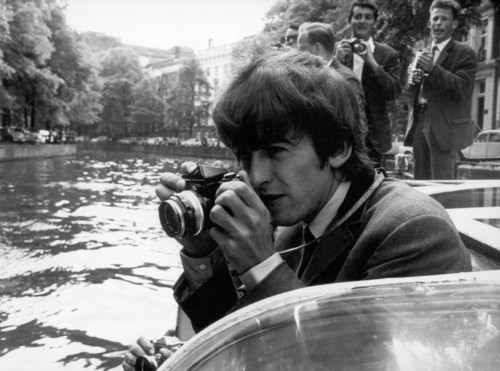
“George was the first Beatle who started taking photos, and he was still doing it when he died. I know I turned him on to photography, and he did some lovely work. Plus he had a huge collection of photographic books.” - Astrid Kirchherr, The Beatles: Classic, Rare & Unseen
“George really was interested in visual — and he used a camera, video camera too, from early days. Also, his father was a merchant seaman, and there’s lots of photographs of Australia, around the world […]. And maybe he picked that up from his father.” - Olivia Harrison, WNYC, November 4, 2011
You can find some of George’s photographs in The Beatles Anthology and Living In The Material World. (x)
#George Harrison#quote#quotes about George#Astrid Kirchherr#Olivia Harrison#George and Astrid#George and Olivia#The Beatles#The Traveling Wilburys#1960s#1970s#1980s#1990s#2000s#Living In The Material World (documentary)#The Beatles Anthology#fits queue like a glove
59 notes
·
View notes
Text

The Society of Masterless Men
When I began thinking about outlaws and outlaw history I realized that if outlaw just means one who breaks the law, then I could write about the lives of nearly every citizen. So I define outlaw as one who not only breaks the law, but who survives by breaking the law or essentially lives outside of it. And the more I delve into Canadas past, the more outlaws I discover, and many of them are worthy of our attention. As an introduction to Canadian outlaw history, here is the story of a group of Newfoundland rebels who survived without masters for half a century.
The story of the Society of Masterless Men, which included women and children, begins in the 18th-century settlement of Ferryland, in Newfoundland. In order to colonize Newfoundland, The British Empire created plantations. These were settlements of primarily Irish indentured servants, many of them very young, (thus their name: the Irish Youngsters), abducted from Ireland either by force or guile and brought to the South Shore of Newfoundland where they were literally sold to fishing masters. Their price: $50 a head.
These village plantations were primarily set up by consortiums and cabals of wealthy merchants in England. The fishing masters were essentially the Lords and Ladies of the villages, living in luxury and security while surrounded by dozens, even hundreds, of indentured servants who fished and labored in the camps processing the fishing catch. British frigates were stationed in the harbors and marines patrolled the town. Because there wasn’t a local police force, the Navy helped reinforce the authority of the local fishing masters.
The workers in these fishing villages were barely a step up from slaves. Corporal punishment was routinely used and everyday life was harsh and brutal. In the small settlement of Ferryland, for instance, there were a gallows and three whipping posts, in separate regions of the town. When a man was sentenced to be flogged for stealing a jug of rum or refusing to work for one of the fishing masters, he was taken to all three posts and whipped so the whole town would have an opportunity to witness the punishment as a warning.
The settlement of Ferryland was founded by Sir George Calvert around 1620, and was partly intended as a “refuge for ...Catholics.” It’s not clear ifthere were any “free” Catholics, or only Catholic servants. This was a time of penal law and repression of Catholicism in Britain and at least some Irish Catholics voluntarily came to the New World to escape persecution. Unfortunately, the laws in Newfoundland were the same as in the Old World. The orders given to the governor from 1729 to 1776 were: “You are to permit a liberty of conscience to all, except Papists, so they be contented with a quiet and peaceable enjoyment of the same, not giving offense or scandal to the government.”
This order wasn’t always strictly followed and around the mid 1700’s there was a crackdown on Catholicism. In 1743, the governor of the time, Smith, wrote to the magistrate in Ferryland, John Benger, instructing him to be mindful of the “Irish papists” in the area. William Keen, the chief magistrate of the city of St. John’s was killed by a group of Irishmen in 1752. Following this assassination, penal laws were strictly enforced for the next thirty or forty years.
Life wasn’t much better for those in the British Navy patrolling the area. The Navy wielded its authority over its seamen with zero compassion and nothing but discipline enforced by abuse and violence.
Food rations were slim and flogging was common. For instance keelhauling - dragging a seaman on ropes under the keel of a ship, thereby shredding his flesh on the sharp edged barnacles- was still a legal punishment even though it frequently resulted in death.
Some refer to the Society of Masterless Men as lore or a traditionally told story, one for which there is little documentary evidence. But there is a fair amount of facts that are known about the Masterless Men. And, as a matter of context, we know a lot about the injustice of the British Empire and of the cruelty of many of its managers and henchmen. We know that indentured servants were brought to Newfoundland and treated with brutality, as were the seamen in the Royal Navy. We also know that one Irish-born Peter Kerrivan was among those young indentured servants and abused seamen. It is largely believed that he was a reluctant seaman, having been pressed into service.
Some time in 1750, while Kerrivan’s ship was docked in Ferryland, he escaped (historians usually choose to say “deserted”). Together with two or three escaped indentured fishermen, he helped establish a lookout and base in the Butter Pot Barrens, a wild area of the Avalon Peninsula, for outlaws. This was the beginning of the Masterless Men.
Hunted by the authorities, the Masterless Men soon learned a way of life based on subsistence and sharing. They came into contact with Newfoundland’s aboriginal peoples, the Mi’qmaq and the Beothuk, who taught the rebels survival skills. They learned how to hunt for food based on the caribou herd on the Peninsula.
At the time, one could be hanged for running away. Nevertheless many young men escaped from the plantations and tookuplives as outlaws. In 1774, for instance, a petition written by Bonavista merchants, justices of the peace, and others, was sent to Governor Shuldham to complain of a number of “masterless” Irishmen who had gone to live in a secluded cove and “were there building fishing rooms.” But Kerrivan’s band of young companions were among the luckiest and best organized.
Word of the well organized free men spread and fresh runaways from coastal settlements came to join them. Eventually their numbers swelled to between 20 and 50 men. There were also women, but their numbers are unknown. The literature I found mention the women simply as “wives,” although I imagine them as strong, rebellious women sickened by the misery and cruelty that surrounded them who also yearned for a freer and better way oflife and whojoined their outlaw husbands voluntarily.
After a while, the group of comrades began trading caribou meat and hides with allies in the remote villages, receiving supplies such as flour, tea, and bullets. They also organized stealth raids against the fishery plantations.
By this time the British authorities, without a police or militia of their own, were beginning to fear that this group of anarchic rebels would inspire too many others to desertion and ordered the Navy to track the freedom-loving band down and make examples of them. Some years passed before the first expedition against the Masterless Men was organized and, by then, the rebels had become skilled wilderness inhabitants. Anticipating the attack or somehow being forewarned, Kerrivan and his comrades cut a series of blind trails which confounded their pursuers. The party of marines sent to capture them often found themselves lost and dumbly led into bogs and impenetrable thick bush.
Eventually the Navy did manage to close in on the rebels’ camp near their lookout, but they found the log cabins deserted, “with every rag and chattel removed”. Taking advantage of their pursuers’ confusion, Kerrivan and his friends had moved off towards the north and west. The navy set fire to their little village but had to return to their base without any prisoners. The Masterless group rebuilt their cabins and the Navy burned them down again. Over time the Navy burned down their cabins three times and each time they were rebuilt.
Two of the rebels were captured and hanged, but the state never did succeed in destroying the Society. In fact, the captured young runaways had joined the band only a few weeks earlier and had been taken by surprise away from the main body of the rebels. They were hanged with great dispatch from the yard-arm of the English frigate in Ferryland. No other Masterless Men were ever captured after this incident, presumably because this only made the outlaws more cautious. Some of the tracks that had been carved partly to support their wilderness ways and partly as subterfuge became Newfoundland’s first inland roads. In fact, their road system eventually connected most of the small settlements of the Avalon Peninsula.
For more than a generation the Masterless Men roamed free over the barrens! Over time, perhaps as military rule began to relax or for reasons unknown to this author, their ranks began to dwindle. In 1789, 39 years after escaping, four men gave themselves up on condition that their only punishment would be deportation to Ireland, which was agreed upon. Many of the other rebels settled in remote parts of Newfoundland’s coast and survived as independent fishermen. Kerrivan, who was never captured, is said to have had a partner, four sons and several daughters and is believed to have remained on the barrens well into old age, never returning to civilization.
The children of the Masterless Men gradually drifted out to the coast and settled down in small coves never visited by the navy. They married the children of other outlaws who had settled there generations earlier and together they raised families.
The story of The Society of the Masterless Men is inspiring because they succeeded. A group of people voluntarily joined together in common cause and broke free from their masters, most never to be captured or to return to their work prisons.
Sources:
Alexina Reid from The Newfoundland and Labrador Archives Newfoundland by Harold Horwood
SecretMasses at Midnight: The Legend of the Grotto in Renews, Newfoundland by Tammy Lawlor
The Canadian Encyclopedia Hurtig Publishers
“The Unshackled Society” by Paul Butler, originally published in Saltscapes Magazine
#freedom#ecology#climate crisis#anarchism#resistance#community building#practical anarchy#practical anarchism#anarchist society#practical#revolution#daily posts#communism#anti capitalist#anti capitalism#late stage capitalism#organization#grassroots#grass roots#anarchists#libraries#leftism#social issues#economy#economics#climate change#climate#anarchy works#environmentalism#environment
6 notes
·
View notes